Uncategorized
Guide to choose the right closure sizes and length for yourself
Selecting the perfect closure for your hair extensions or wigs can be a game-changer in achieving the ideal hairstyle. However, navigating the vast array of closure sizes and lengths available can be overwhelming. This guide will empower you to choose the perfect closure length and size that suits your unique preferences and ensures that your hair looks flawless and fabulous every time.
What is a closure hair piece
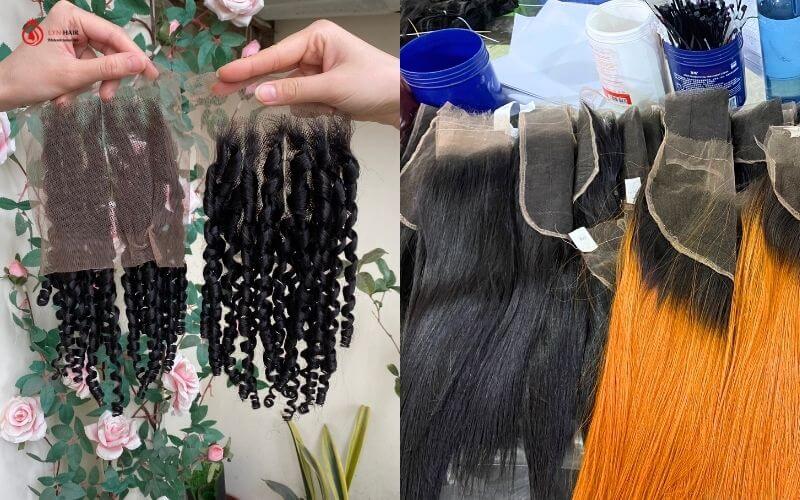
A closure hairpiece, often simply referred to as a “closure,” is a hairpiece used in hair extensions or wigs to create a natural-looking part or hairline. It is typically made of lace or silk material and is designed to mimic the appearance of a real scalp. Closures are used to cover the top front portion of the head where the hair would naturally part.
A closure hair is a crucial component in creating a seamless and natural hairstyle when using hair extensions or wigs. They allow you to part your hair in different ways (middle part, side part, etc.) while concealing the underlying tracks or wefts of the extensions. Closures also protect your natural hair from heat and other styling damage.
When using a closure, it’s essential to properly install and blend it with your natural hair or extensions for the most natural and realistic appearance. Closures are a popular choice among individuals looking for versatile and natural-looking hairstyles with hair extensions or wigs.
>> SHOP NOW: Lace Closure 4×4
Common Types of Closure and Frontal
There are two common types of closures:
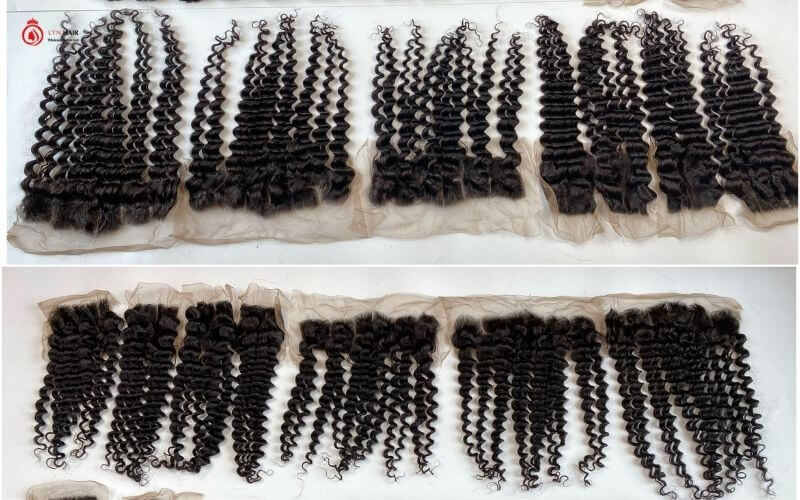
Lace Closure: Lace closures are made from a delicate lace material that closely resembles the scalp. Individual hair strands are tied or ventilated onto the lace base, creating a realistic appearance. Lace closures are popular because they offer a natural look and can be customized to match the color and texture of your natural hair or extensions.
Silk Closure: Silk closures are constructed using silk material instead of lace. They have a silk base that mimics the scalp. Silk closures are known for their durability and ability to hide the knots where the hair is attached, creating a more natural appearance. They can be a great choice if you want extra longevity.
Common size of closure
Closures come in various sizes, including 4×4, 5×5…, and larger sizes, depending on the coverage area you desire. The choice of closure size depends on your styling preferences and the look you want to achieve. Most common sizes of closures used in hair extensions and wigs are:
4×4 Closure: This is one of the most popular closure sizes. It measures 4 inches by 4 inches, providing a square-shaped coverage area on the top front of the head. A 4×4 closure is versatile and can be used to create various parting styles, including middle parts and side parts.
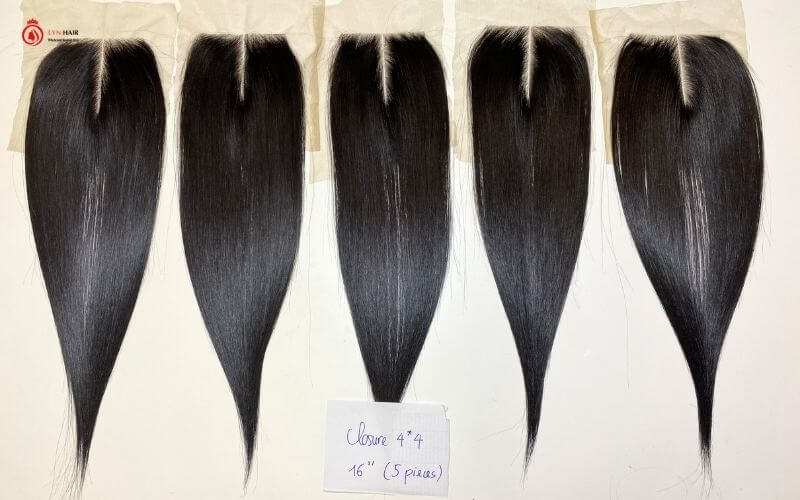
5×5 Closure: A 5×5 closure measures 5 inches by 5 inches, offering a slightly larger coverage area than the 4×4 closure. It allows for more flexibility in parting and styling options, making it a preferred choice for those who want a wider part or more versatility.
6×6 Closure: A 6×6 closure measures 6 inches by 6 inches and provides even more coverage than the 5×5 closure. It is an excellent choice for individuals who desire a broader parting area or have specific styling preferences.
7×7 Closure: A 7×7 closure measures 7 inches by 7 inches and offers a generous coverage area. It is suitable for those who want an even larger parting space or have specific hairstyling needs.
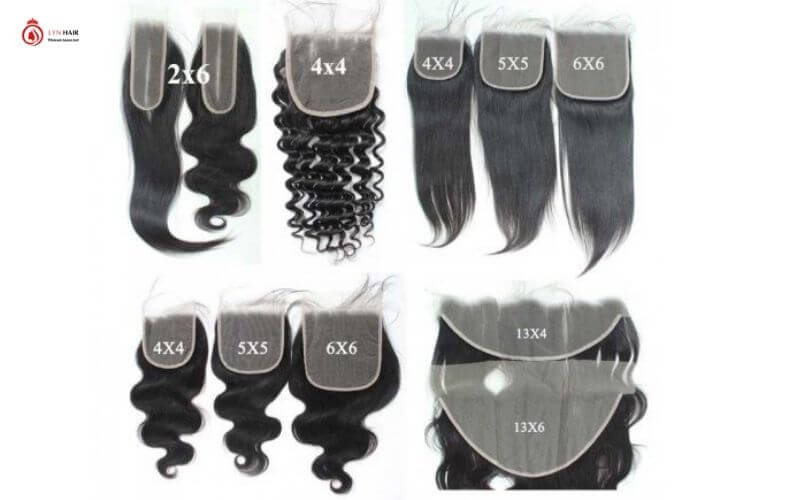
Frontal: While not a closure in the traditional sense, a frontal is a larger piece that covers the entire front of the head from ear to ear. Frontals typically measure about 13 inches by 4 inches or 13 inches by 6 inches. They allow for various parting styles and can create a realistic hairline from ear to ear.
How to Choose The Right Types of Closure
Choosing the right type of closure for your hair extensions or wig is essential to achieve the look you desire. Here are some factors you should consider before make choice:
1. Consider Your Hairstyle Goals:
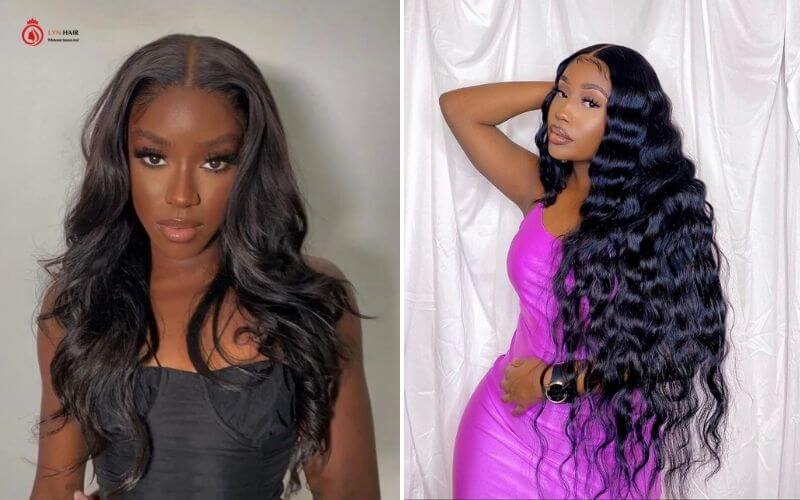
Think about the specific hairstyle you want to achieve. Are you looking for a natural look with a defined part, or do you want a more versatile option that allows you to change your parting style frequently?
2. Determine the Coverage Area:
Measure the area on your head where you want to place the closure. If you need a larger coverage area, you may opt for a 5×5 closure, 6×6 closure, or a frontal. If a smaller area suffices, a 4×4 closure might be suitable.
3. Select the Closure Material:
Decide whether you prefer a lace closure or a silk closure. Lace closures are known for their natural appearance but may require more careful handling. Silk closures are durable and can hide knots effectively.
4. Match the Hair Texture:
Ensure that the texture of the closure matches the texture of your natural hair or the hair extensions you plan to use. This will help create a seamless blend.
5. Choose the Closure Color:
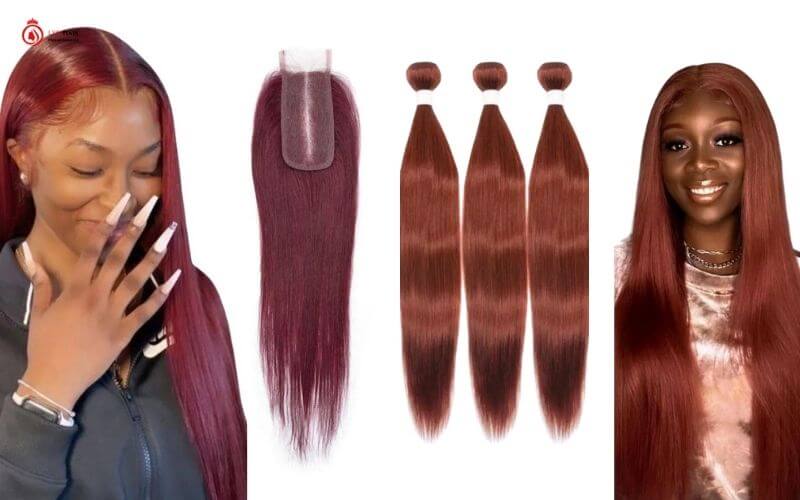
Select a closure that closely matches the color of your natural hair or the hair extensions. You can also choose a closure with a slightly lighter shade if you plan to dye or color your hair.
6. Consider Skill Level:
Assess your experience level in installing and styling closures. Smaller closures like 4×4 are generally easier to work with, while larger ones and frontals may require more expertise.
7. Think About Longevity:
Consider how long you want the closure to last. Silk closures are often more durable and can withstand daily wear and styling, which can be a factor if you plan to use the closure for an extended period.
8. Budget:
Keep your budget in mind when choosing a closure. Larger closures and frontals tend to be more expensive than smaller ones, so make sure the type you choose fits within your budget.
9. Consult with a Professional:
If you’re unsure about which type of closure to choose or how to install it properly, consider consulting with a hairstylist or a wig specialist. They will give you the best advice.
Frequently Asked Questions:
1. What length closure should I get?
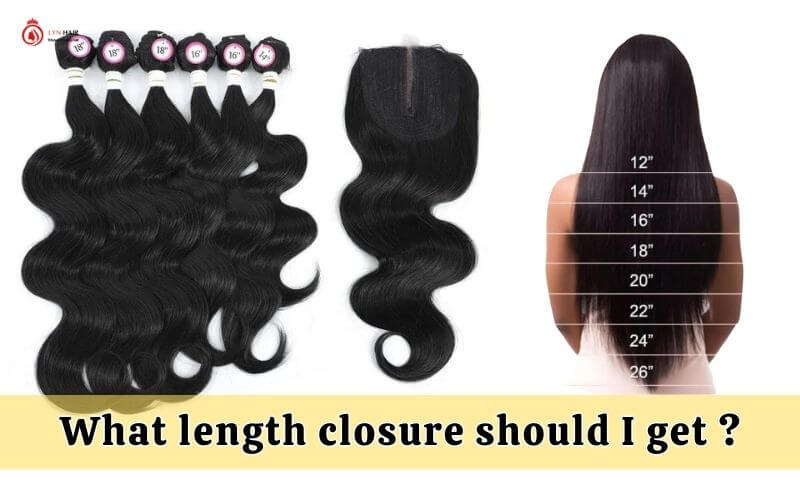
The length of the closure can significantly impact your overall look. Here’s a breakdown based on different preferences:
Shorter Length (8-10 inches): Opt for this length if you want a natural and everyday appearance. Shorter closures work well for standard parting styles like middle parts and simple side parts. They provide a realistic look suitable for casual and professional settings.
Moderate Length (12-14 inches): If you desire versatility and the ability to create various hairstyles, consider a moderate-length closure. These closures, ranging from 12 to 14 inches, allow for extended parting options and versatile styling, including updos and braids.
Longer Length (16 inches and above): Longer closures, starting at 16 inches, are ideal for dramatic and longer hairstyles. They offer ample hair to work with for creative styling and can help you achieve statement looks.
2. What size closure should I get?
The size of the closure determines the coverage area and styling options. Some common closure sizes are 4×4 Closure, 5×5 Closure, 6×6 Closure, Frontal 13×4, 13×6.
When deciding on the right length and size, consider your face shape, budget, and how you plan to wear your hair regularly. A consultation with a hairstylist or wig specialist can provide tailored recommendations based on your individual needs and style preferences.
𝑭𝒐𝒓 𝒎𝒐𝒓𝒆 𝒊𝒏𝒇𝒐𝒓𝒎𝒂𝒕𝒊𝒐𝒏, 𝒄𝒐𝒏𝒕𝒂𝒄𝒕:
Whatsapp: +84.936.085.069
Follow us on Instagram: @lyn.hair_official and @lynhair.factory
Website: lynhair.com

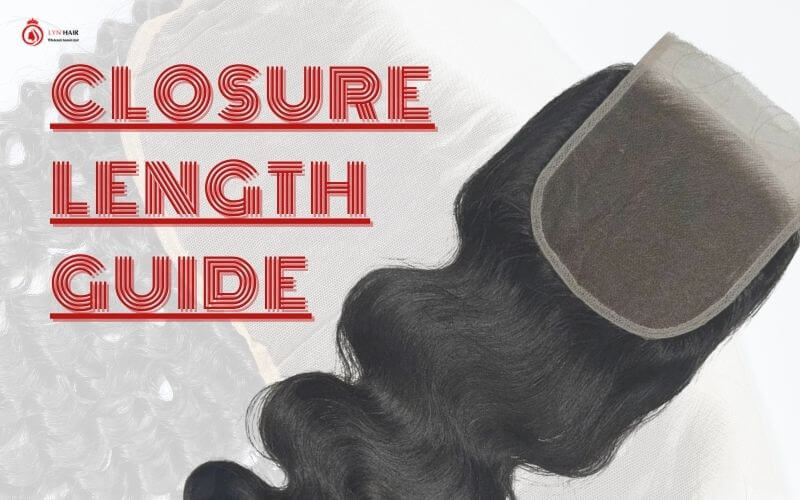
If I wear 14″ extensions and what closure should I get 12″ and I’m looking at 2″ x 6″ k closure
Is this good and correct
Yes, you can get closure 12”, 2×6. That’s fine
If I get 16 inch bundles .. will a 14 inch or 12 inch closure be better